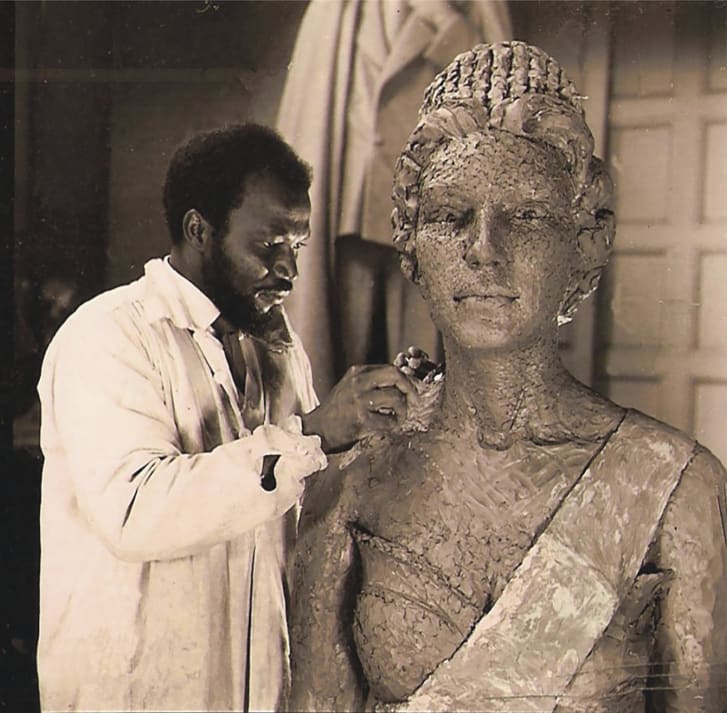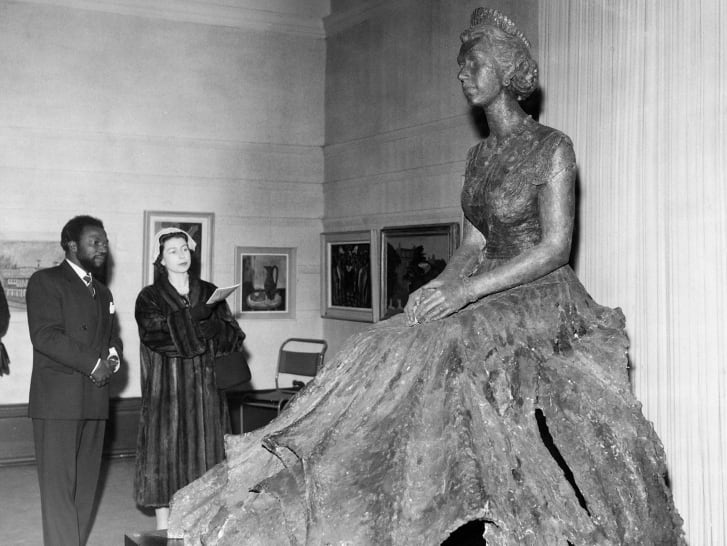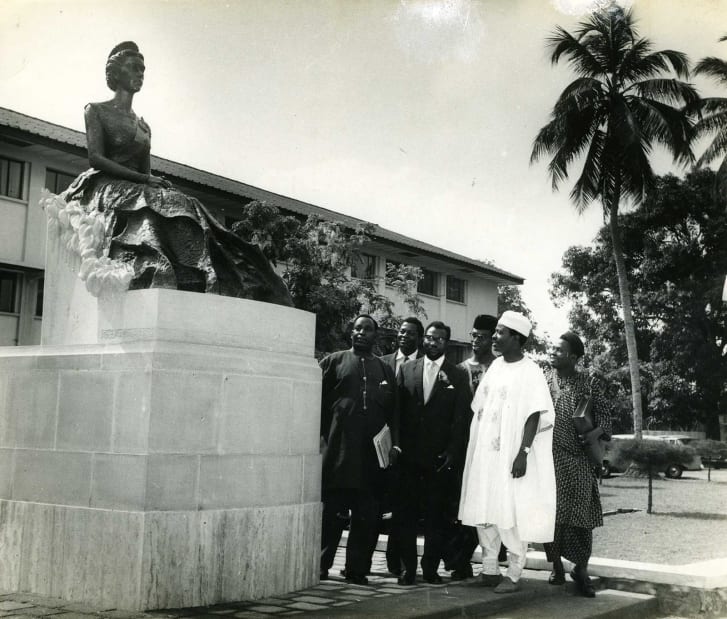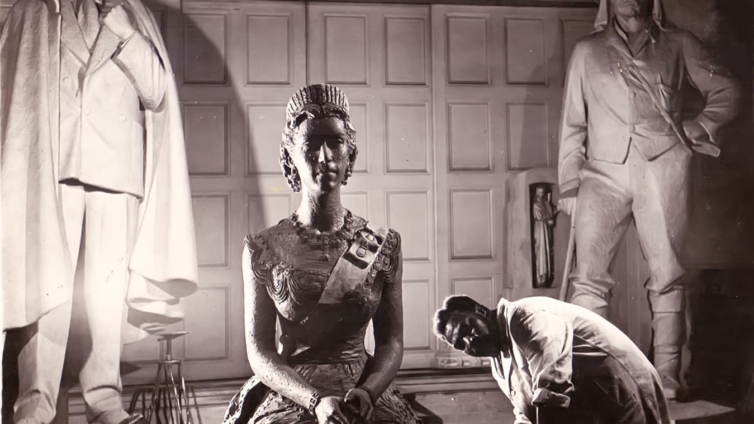The year was 1956, and there was much fanfare and anticipation for Queen Elizabeth's first visit to Nigeria.
The young monarch was just a few years into her reign and making a highly anticipated visit to the West African country, which had yet to become a republic.
Ahead of her arrival, famed Nigerian artist Ben Enwonwu received a royal commission to commemorate her visit with a statue, which made him the first African artist to create an official portrait of a member of the royal family.
He began working on the sculpture the following year, visiting Buckingham Palace in London for several sittings.
"In 1957, Queen Elizabeth II sat for Enwonwu for a large bronze sculpture," noted the Royal Collection Trust, which oversees the art collection of the British royal family.

In all, Queen Elizabeth sat for Enwonwu 12 times, eight of which were at Buckingham Palace, according to the Ben Enwonwu Foundation's website.
The rest of the sittings took place at a private studio belonging to Sir William Reid-Dick, Enwonwu's colleague at the Royal Society of British Artists.
During this time, Enwonwu "finished a portrait bust and a sketch model of the sculpture," according to the foundation.

'African features'
Enwonwu completed the sculpture in 1957 and raised some eyebrows at the time for depicting the queen with fuller lips. His son Oliver said that it was part of Ben Enwonwu's signature style to "Africanize" his subjects.
"Some of the rave reviews that the sculpture received was that the artist depicted the queen through his African eyes, the work had African features, which was characteristic of his work," Oliver Enwonwu told CNN.
Oliver, also a renowned artist, described the queen's sculpture as one of his father's greatest works.
"My father was very proud of it. It was one of his masterpieces that showed his dexterity as an artist," he told CNN.
"At the time, it (Enwonwu making a sculpture of the queen) was a big deal because he was an African artist. But he was the most famous in the Commonwealth at the time so it was very easy that he would be given the nod," Oliver added.

While the sculpture later ended up in Nigeria, Queen Elizabeth acquired the bust and, according to the Royal Collection Trust, had another Enwonwu sculpture as well as a number of his paintings.
The bronze of the queen was later placed at the Nigerian parliament building ahead of preparations for the country's independence from Britain in 1960.
The work now resides in the Nigerian national museum.
An influential African artist
Enwonwu has come to be known as one of Africa's greatest modernists.
His portrait of Nigerian princess Adetutu "Tutu" Ademiluyi, dubbed the "African Mona Lisa," sold for over $1.6 million (£1,205,000) at a London auction in 2018.
Born in 1917, Enwonwu has been described as the most influential African artist of the 20th century.
He had become an eminent artist even before his royal commission, and in 1954, was given a Member of the Order of the British Empire (MBE) award by the queen for his services to art.
Enwonwu earned a scholarship in 1944 from Shell West Africa and the British Council to study fine art in the UK after a successful solo exhibition. He received a classical education at the Slade School of Fine Art in London and attended Oxford University. Enwonwu later returned to Nigeria to become a lecturer.
He was appointed Nigeria's first professor of art by the University of Ife, now known as Obafemi Awolowo University, in 1971 and received a National Merit Award from the Nigerian government nine years later.
He died in 1994 at the age of 77.
Latest Stories
-
Paris 2024: Opening ceremony showcases grandiose celebration of French culture and diversity
3 hours -
How decline of Indian vultures led to 500,000 human deaths
4 hours -
Paris 2024: Ghana rocks ‘fabulous fugu’ at olympics opening ceremony
4 hours -
Trust Hospital faces financial strain with rising debt levels – Auditor-General’s report
4 hours -
Electrochem lease: Allocate portions of land to Songor people – Resident demand
5 hours -
82 widows receive financial aid from Chayil Foundation
5 hours -
The silent struggles: Female journalists grapple with Ghana’s high cost of living
5 hours -
BoG yet to make any payment to Service Ghana Auto Group
5 hours -
‘Crushed Young’: The Multimedia Group, JL Properties surprise accident victim’s family with fully-furnished apartment
6 hours -
Asante Kotoko needs structure that would outlive any administration – Opoku Nti
6 hours -
JoyNews exposé on Customs officials demanding bribes airs on July 29
7 hours -
JoyNews Impact Maker Awardee ships first consignment of honey from Kwahu Afram Plains
8 hours -
Joint committee under fire over report on salt mining lease granted Electrochem
8 hours -
Life Lounge with Edem Knight-Tay: Don’t be beaten the third time
8 hours -
Pro-NPP group launched to help ‘Break the 8’
8 hours

